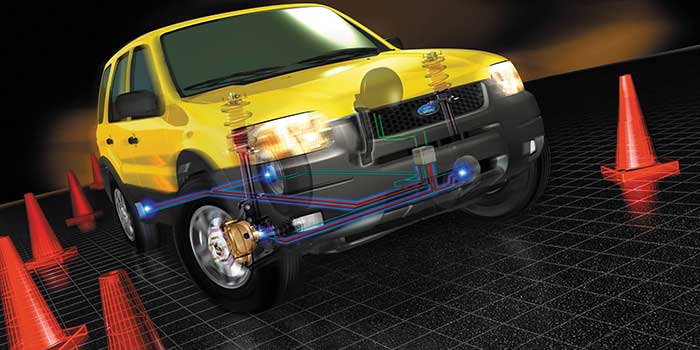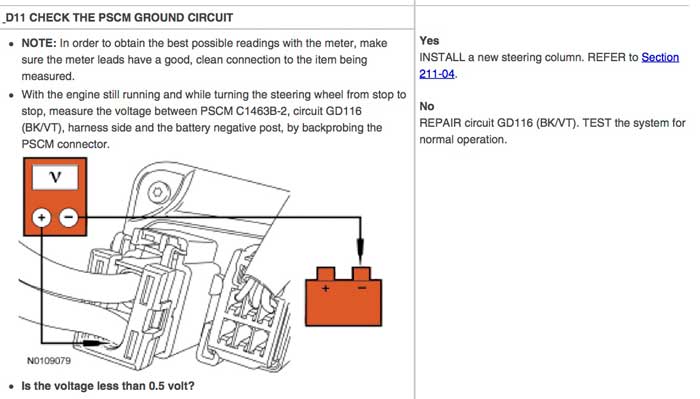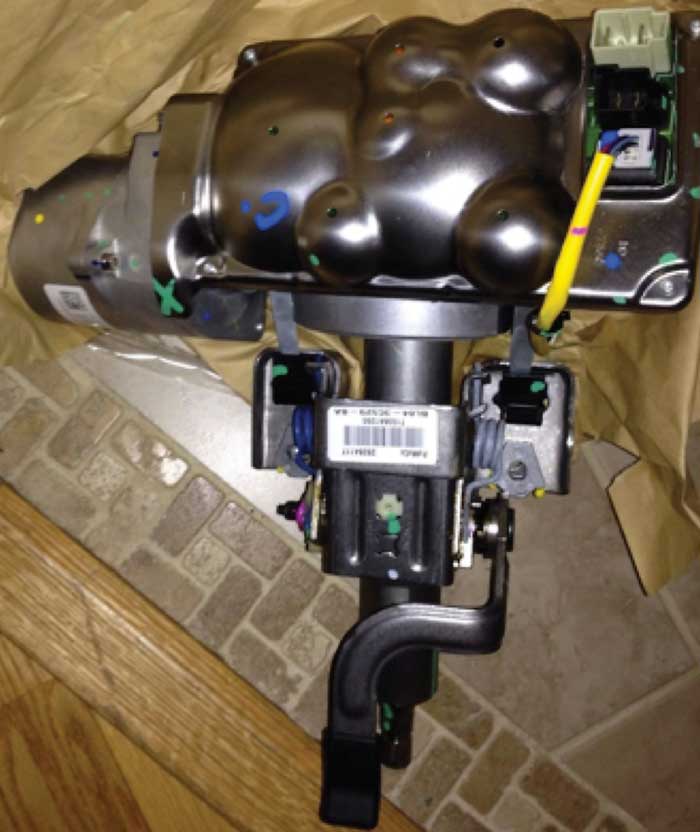 Adapted from John Forro’s article in Underhood Service.
Adapted from John Forro’s article in Underhood Service.
The vehicle in question is a 2008 Ford Escape with a 3.0L engine. The customer complaints are as follows: The steering wheel will turn by itself; at times, usually when turning, the vehicle will lose all power steering assist; and occasionally, while turning, the vehicle’s steering seems shaky.
The 2008 and newer Escape models use electric assist power steering. Instead of a conventional power steering pump, these vehicles have a power steering control module (PSCM) that works along with an electric motor, a torque sensor and various other angle sensors to achieve the desired steering effect. This circuit is protected by a fuse and is on the data bus network, so be sure to check each module for any related faults that could be causing the steering module to not communicate on the bus line.
For our case study, my first step was to perform a road test to verify the customer’s complaint. During my time driving the vehicle, it had no power steering at all. Back at the shop I performed an ALL SYSTEMS data scan to see if any of the modules were having trouble communicating with the network. All modules showed a good state of health, so I proceeded to pull the stored trouble codes from the PSCM. I found that this vehicle had stored a B2278 relating to a faulty torque sensor and/or circuit fault.
From my earlier conversations with the customer, I was informed that this has been a problem for about a month, and she had paid her ex-husband $100 to replace the power steering pump (which it doesn’t have) and had taken it to the Ford dealership for diagnosis. They informed her that a new steering column was needed to repair the vehicle.
During my research of the B2278 trouble code, I found the diagnostic procedure for the electrical circuit, which included checking for powers and grounds at connectors c2231a and c2231b. Also, TSB No. 14-0016 stated that Ford now has a replaceable torque angle sensor available. Why did the dealer want to replace the entire column assembly as opposed to just the sensor? So, I started following the diagnostic procedure.
All of the electrical tests went OK. I decided to remove the column from the vehicle to get a closer look at things, and I found quite a bit of slop where the steering shaft connects to the motor. I may have just replaced the torque sensor and not repaired the vehicle correctly if I didn’t disassemble the column. I commend the unknown Ford tech for taking the time to do such a thorough inspection of this vehicle because that must be the reason he recommended replacing the entire column as opposed to just following the TSB and replacing the sensor.
A new column was ordered for this vehicle and installed. After installing the new column, one must calibrate the sensor using a factory scan tool or equivalent pass-thru device. I can’t stress enough how important it is to perform a thorough diagnosis, as opposed to just following a TSB/Silver Bullet or a Google search of the problem.













